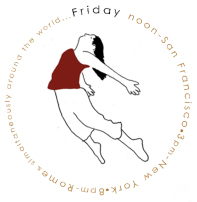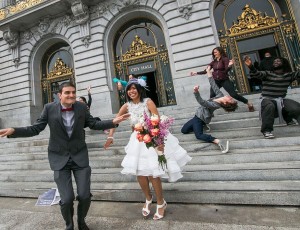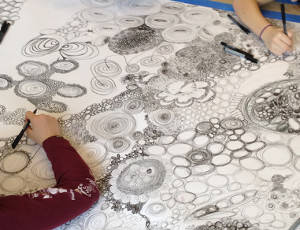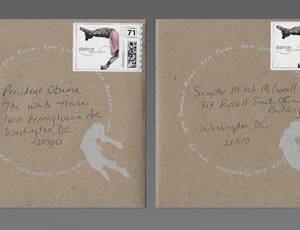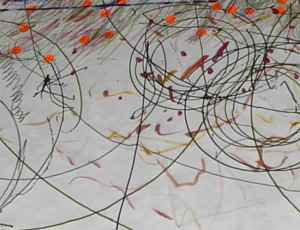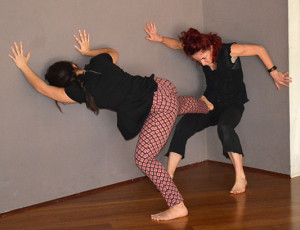This September a smorgasbord of dance film descended upon San Francisco with the 2013 San Francisco Dance Film Festival. Since 2010 the annual film festival has provided the Bay Area with a ”platform for the presentation and further development of dance-based films”.
This year the festival partnered with IMZ, the International Music and Media Center, as well as dancescreen, increasing the scope and reach of the festival. Reaching out to dance and film communities around the world, the festival sought the cutting edge in dance film, offering innovative works which challenged traditional conceptions of dance, film and the boundaries between the two.
The short film, “Outside In” by Swedish directors Tove Skeidsvoll, Petrus Sjövik and Tyrandora, Choreographed by Tove Skeidsvoll portrays a dancer moving slowly through a foggy and haunting forest, before the frame reveals a camera crew filming her dance. As the camera crew closes in on her dance, the dancer becomes increasingly agitated, and the audience understands that this forest and her movement is a private experience. The camera is an intrusion. The film questions the boundaries between dance and film, suggesting that dance film offers a highly intimate take on the visceral experience of dance. In traditional proscenium venues a dancer is many yards away from the closest audience member, but in dance films such as ”Outside In” the camera is close to the dancer, showing the sweat on her body, the curvature of her spine, the intensity in her eyes. Dance film thus has the potential to offer a close and highly intimate view of dance.
Dance film is unique in that it offers a view of dance occurring within a specific setting. Dance film is site-specific in nature, presenting the dancer within a unique setting, which accents the mood of the piece. The film, “Fanfare for a Marching Band” Directed by Danièle Wilmouth with choreography by Peter Carpenter, explored the site-specific nature of dance film. This film explored a variety of settings and backdrops in which the ecstatic movement of the marching band failed to impact the space. This film thus drew the audience eye to a disjunction between setting and choreography.
The festival presented work by professional dance-film-makers, alongside the work of student and early- career directors and choreographers, providing the audience with a taste of what is relevant and powerful about dance film today. Renowned directors Katrina McPherson and Simon Fildes used their unique improvisational camera technique with their dance film, “The Time it Takes”, which is a technique that they have explored in their previous work in the genre. Early-career San Francisco- based artists, Eric Garcia and Kat Cole of Detour Dance, showed the work, “Pedestrian Crossing”, in which they explored everyday gestures, which have the potential to define a relationship between two people. The integration of artists provided a glimpse of what people are questioning, wondering and investigating in dance and film, as well as a suggestion and hope for the evolution of the genre in the future.
The curation of the festival sparked thought on the relation between dance and film in the newly emerging field of dance film. Said one audience member, “Dance is an expression of the real, as unreal. It is an expression of possible movement of the human body that appears phenomenal. Film appears real but is unreal” When these possibilities collide in dance film the potential is endless.

 Sign In
Sign In